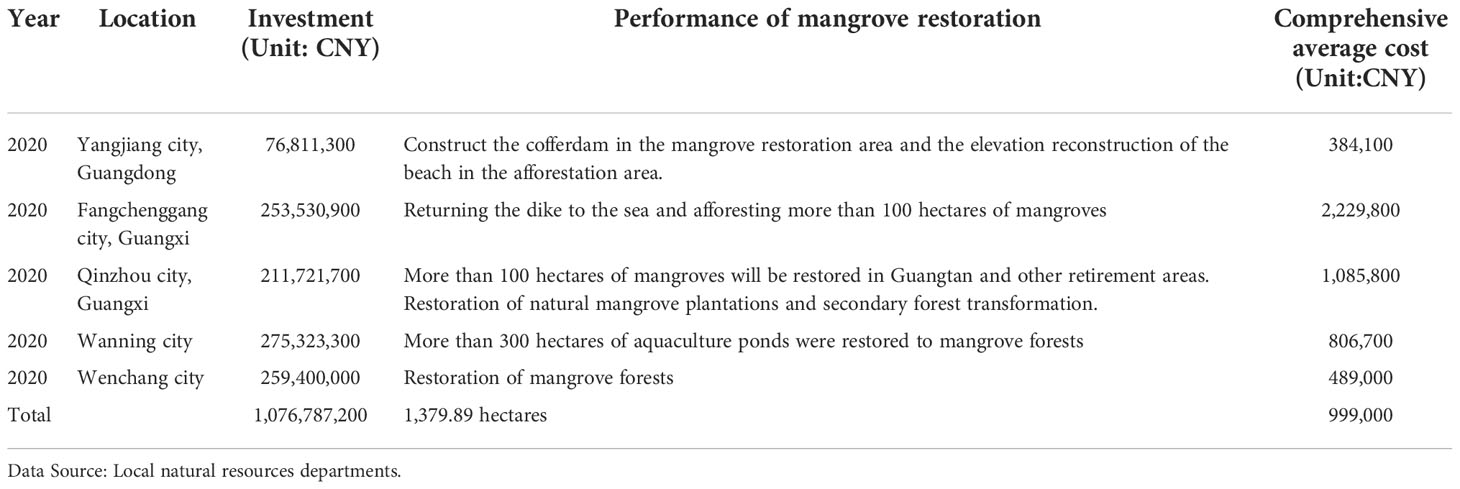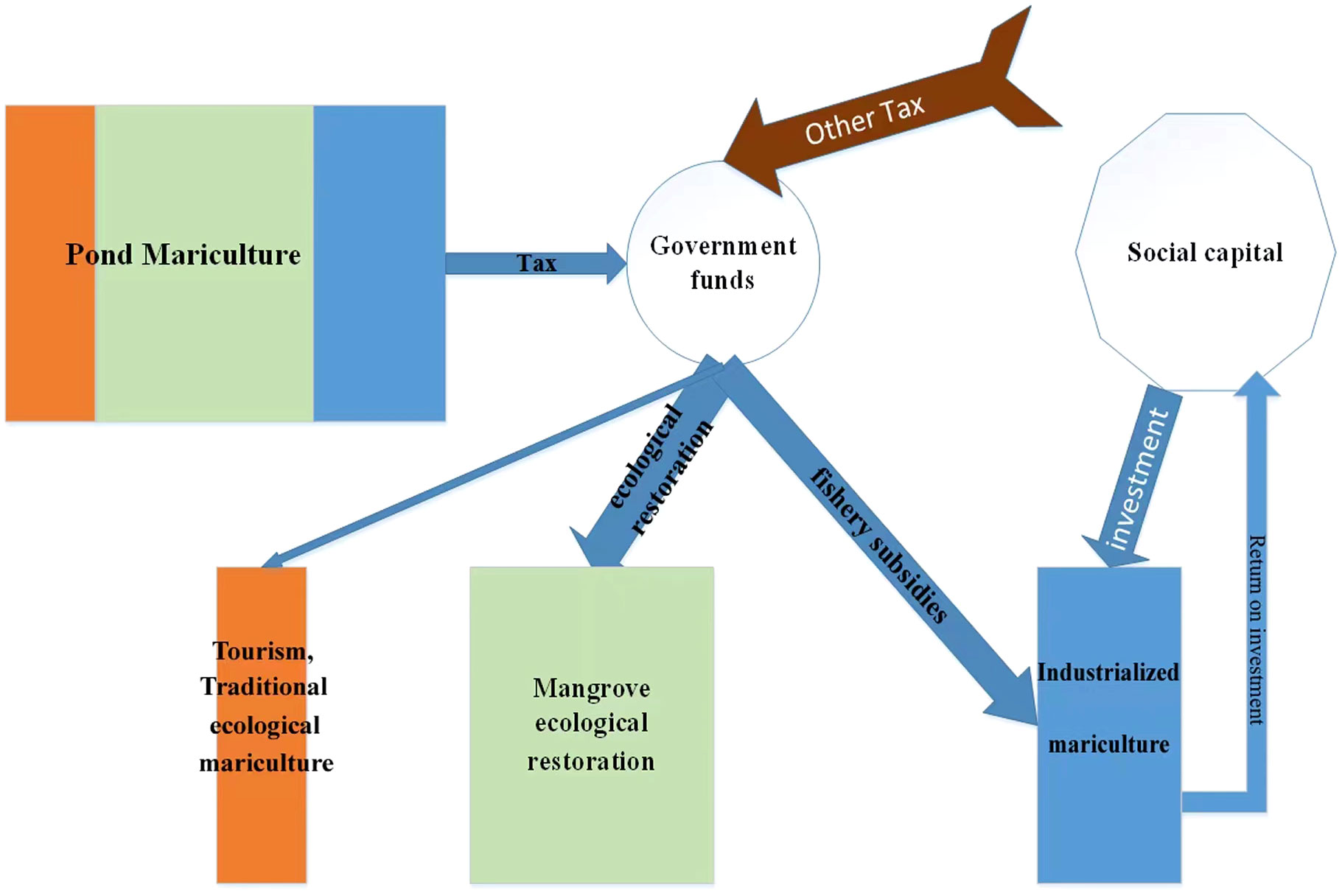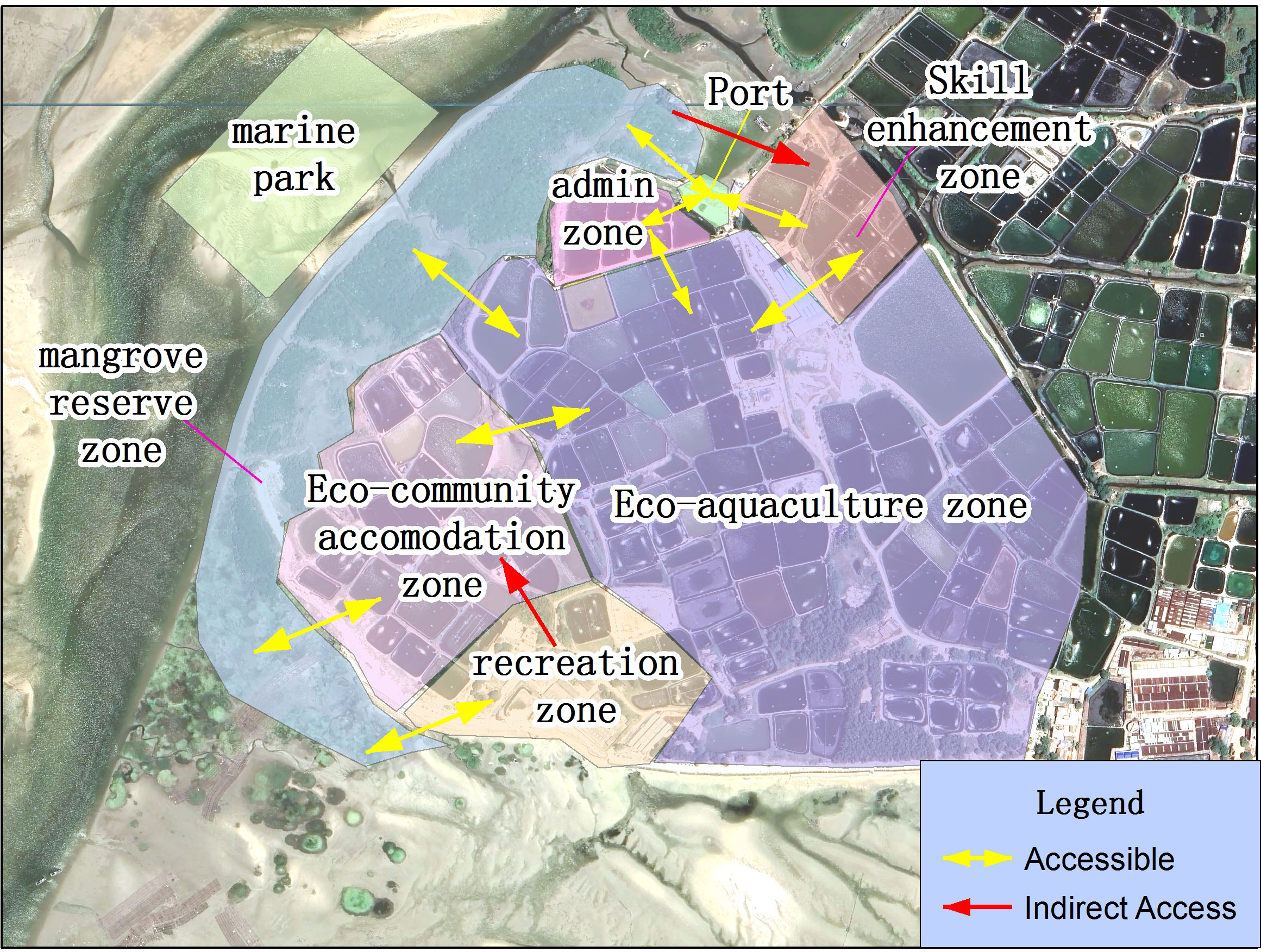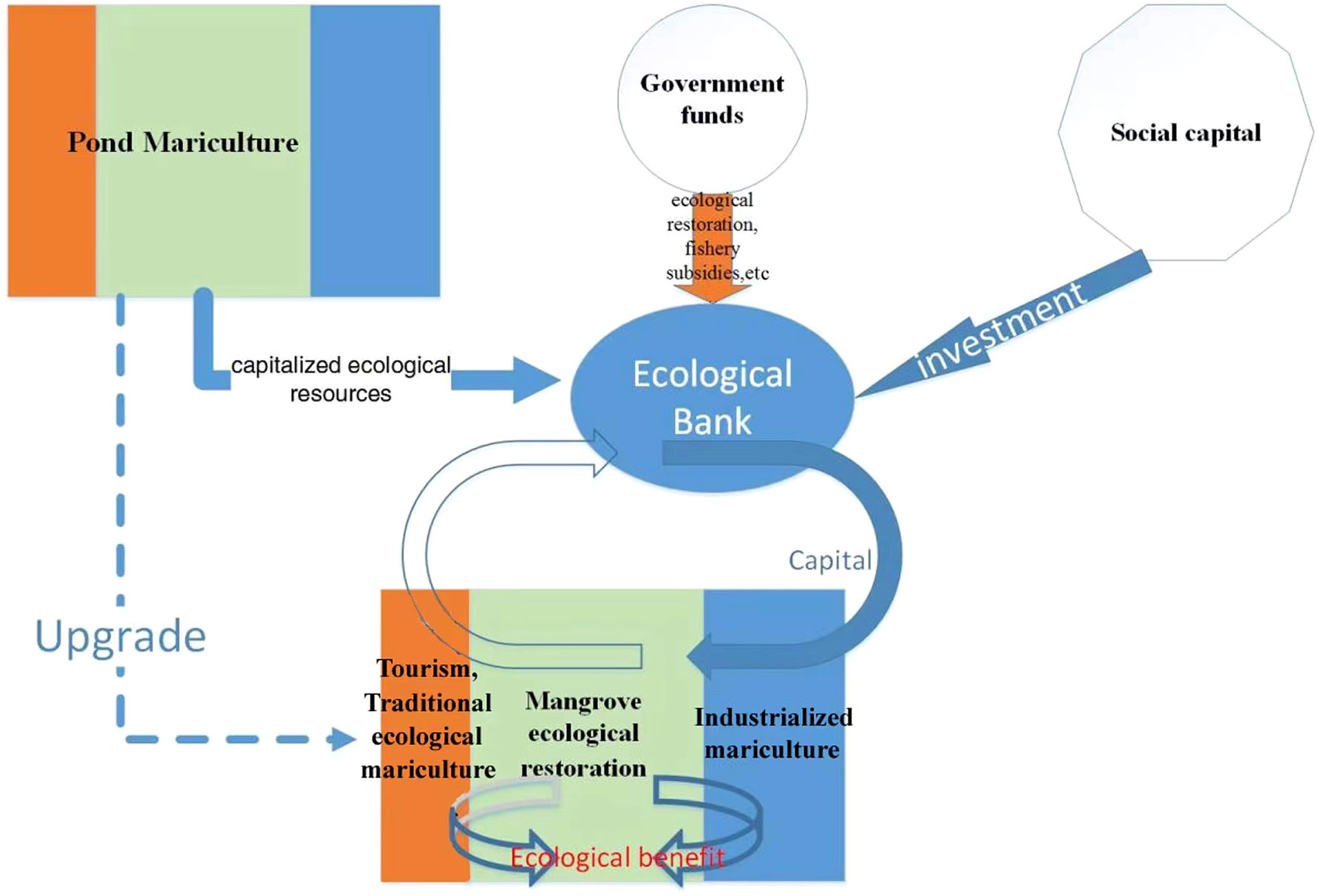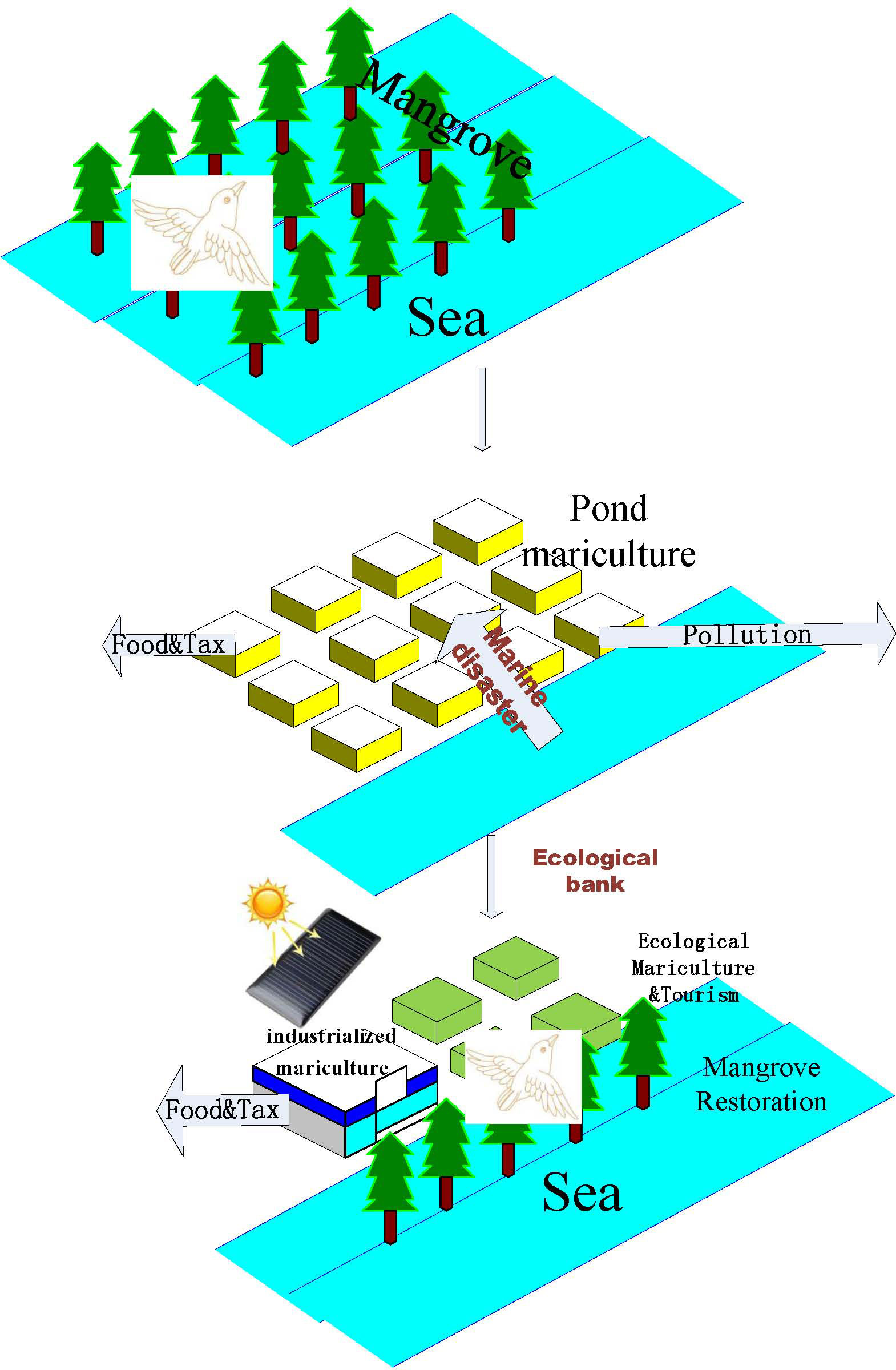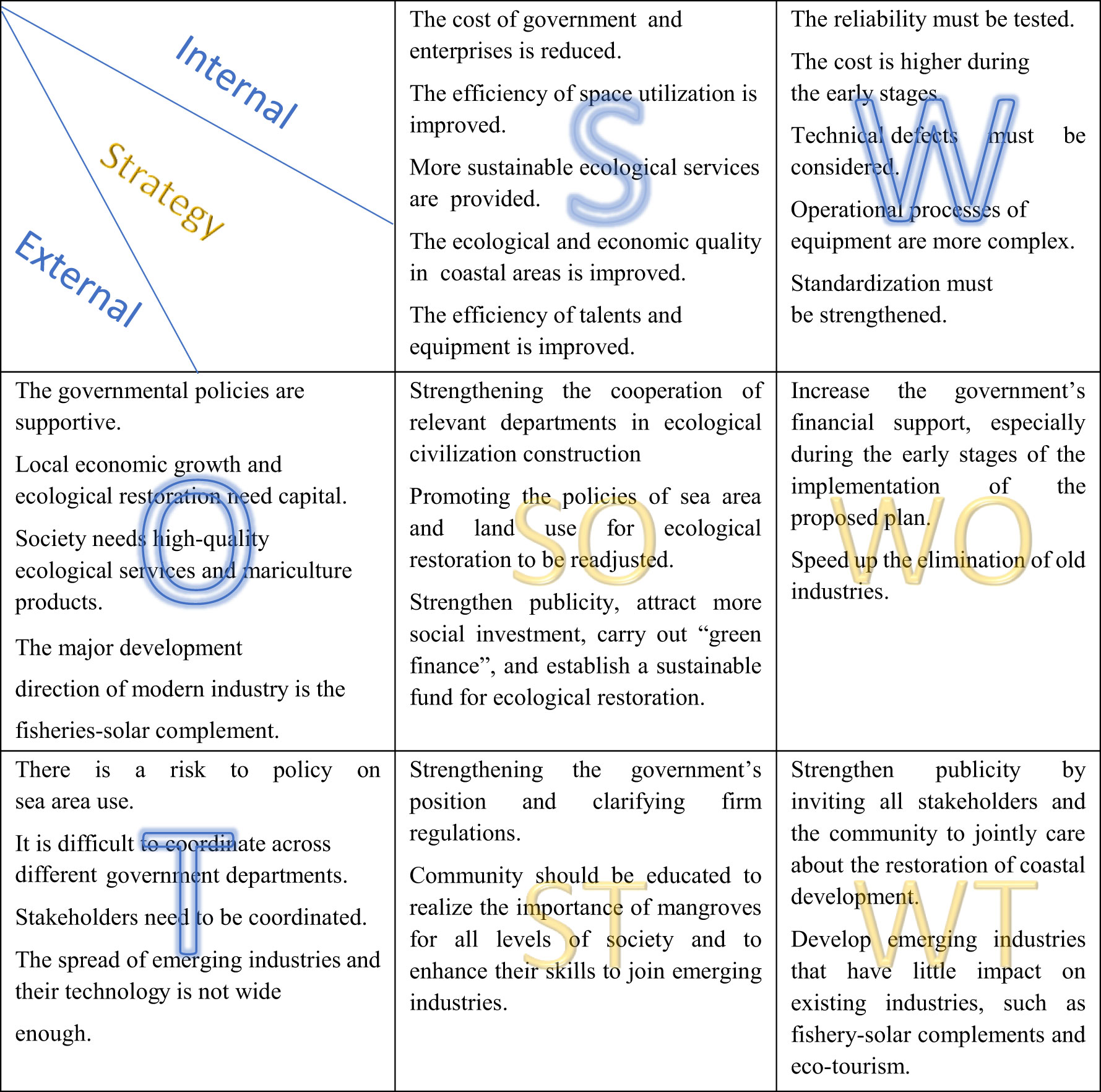- 1South China Sea Institute of Planning and Environmental Research, State Oceanic Administration, Southern Marine Science and Engineering Guangdong Laboratory (Zhuhai), Guangzhou, China
- 2South China Sea Marine Survey and Technology Center, State Oceanic Administration, Guangzhou, China
In this study, we aimed to provide policy advice that supports continuous ecological restoration and coastal economic development. Our analysis indicated that insufficient funds and space are the main problems in mangrove restoration projects in China and Southeast Asian countries. The average cost of mangrove restoration projects in China has been RMB 999,000/ha, leaving a mangrove restoration funding gap of RMB 1,500,000,000/year. Another common problem of emerging industries is insufficient space, another is a lack of subsidies. Learning from the positive experiences of inland areas and Southeast Asian countries, we propose a plan for integrated management that improves emerging marine industries and ecological restoration with the participation of social capital. We also designed a time road map to achieve the plan based on a target area. A SWOT (Strengths, Weaknesses, Opportunities, and Threats) analysis showed that the plan is a win-win model plan, which may generally meet the needs of the local government, such as ecological restoration, pollution control, industrial upgrades, and income improvement. Finally, we suggest that governments should strengthen cross-department coordination, improve current sea area use policies, and strengthen associated publicity attempts.
Introduction
In recent decades, China’s coastal areas have witnessed rapid economic development, accelerated population inflow, increased development intensity, and rapid accumulation of ecological dangers (Gao and Gou, 2014). Under the dual pressure of human activities and climate change, the coastal ecosystem is degrading. For example, the coastlines of some developed areas are seriously eroded; some typical marine ecosystems and habitats, such as mangroves, have been lost completely or are in an unhealthy state. In China, mariculture occupies a large amount of coastal space. However, mariculture farmers here usually own scattered mariculture ponds, hindering the organization of efficient production and upgrades of technology. Consequently, the scattered mariculture poses immense disadvantages, which influences the health of the coastal ecosystems. Additionally, because of antibiotic abuse and polluted aquaculture wastewater, aquaculture survival and growth rates are seriously restricted and the adjacent systems of coastal areas are degraded. In turn, the sustainable development of mariculture as well as the local economic development is negatively influenced. Therefore, pond mariculture must be upgraded to cleaner mariculture with better space utilization. They can also be improved by the introduction of fishery–solar complementary systems or use for tourism purposes. These emerging industries can help save space for ecological restoration by providing sustainable ecological services. Therefore, the combination of marine ecological restoration and upgradation of the mariculture industry will have immense practical significance.
Currently, the management, planning, and funding of these emerging industries and associated ecological restoration projects are set up separately and governed by different departments. For example, mariculture is governed by the agriculture and rural affairs department. Ecological restoration is governed by the natural resources department, ecotourism is managed by the culture and tourism department, and the management of fishery–solar complementary industries belongs to multiple departments, including the agriculture and rural affairs department and the national energy department. Different departments have different and possibly contradictory guidelines on managing the area. For example, even if a fishery–solar complementary company reaches an agreement with mariculture farmers, the latter may still have to obtain sea use permits. Such multiheaded management models cause low efficiency, ineffective utilization of space, and scattered application of funds. Furthermore, it discourages social investors from investing funds in these emerging industries. Moreover, in some ecologically degraded areas, such as mangrove forests, that have been subjected to mariculture activities for >40 years, the restoration plan not only requires a huge financial capital but also may pose a conflict with sustainable food supply and economic growth (Li et al., 2013; Yu et al., 2019; Xu et al., 2021b).
Overall, a new approach to economic development and ecological restoration is needed to achieve industrial upgrades in coastal areas with mariculture ponds. However, the development of emerging industries in these areas will encounter the problem of sea area use, considering that current sea area use policies make it difficult or even impossible to obtain relevant approvals (Xinhua News Agency, 2018). Thus, the need for space in the sea is vital for the ecological restoration and emerging industries in coastal mangrove forests.
To solve the problems discussed above, integrated management of ecological restoration efforts and upgrades in emerging industries should be practiced by the local government. To analyze a potential integrated management plan, we first illustrate the current status and problems of mangrove restoration projects and upgrades in local industries. We draw inspiration from the successful experience of Nanping city in China and some Southeast Asian countries. Finally, a SWOT (Strengths, Weaknesses, Opportunities, and Threats) analysis was performed on the proposed plan to present measures for attaining local sustainability.
Current situation of mangrove degradation
The total area covered by mangrove forests in China is ~27,100 hectares (BThe Third National Land Resource Survey, 2019). Mangroves in China are naturally distributed in southern provinces, including Guangdong, Guangxi, Fujian, Hainan, Taiwan, Hong Kong, and Macao. Mariculture has increased since the 1960s, and most mangroves in the middle and low intertidal zone were destroyed. By the 1990s, the damage worsened, and mangroves in the high intertidal zone were also destroyed, leading to serious degradation of coastal ecosystems. As Figure 1 shows, the mangrove area decreased by 62% from 1973 to 2000. Although the area covered has been restored to some extent since 2000, the area covered by mangroves by 2019 was still 44% lower than that in 1973 (Jia, 2014; Bureau of Nature Resources of Jiangmen City, 2019; Bureau of Statistics of Guangxi Zhuang Autonomous Region, 2019; Department of Nature Resources of Fujian Province, 2019 (unpublish); Department of Nature Resources and Planning, 2019 (unpublish); Xinhua News Agency (2021)).
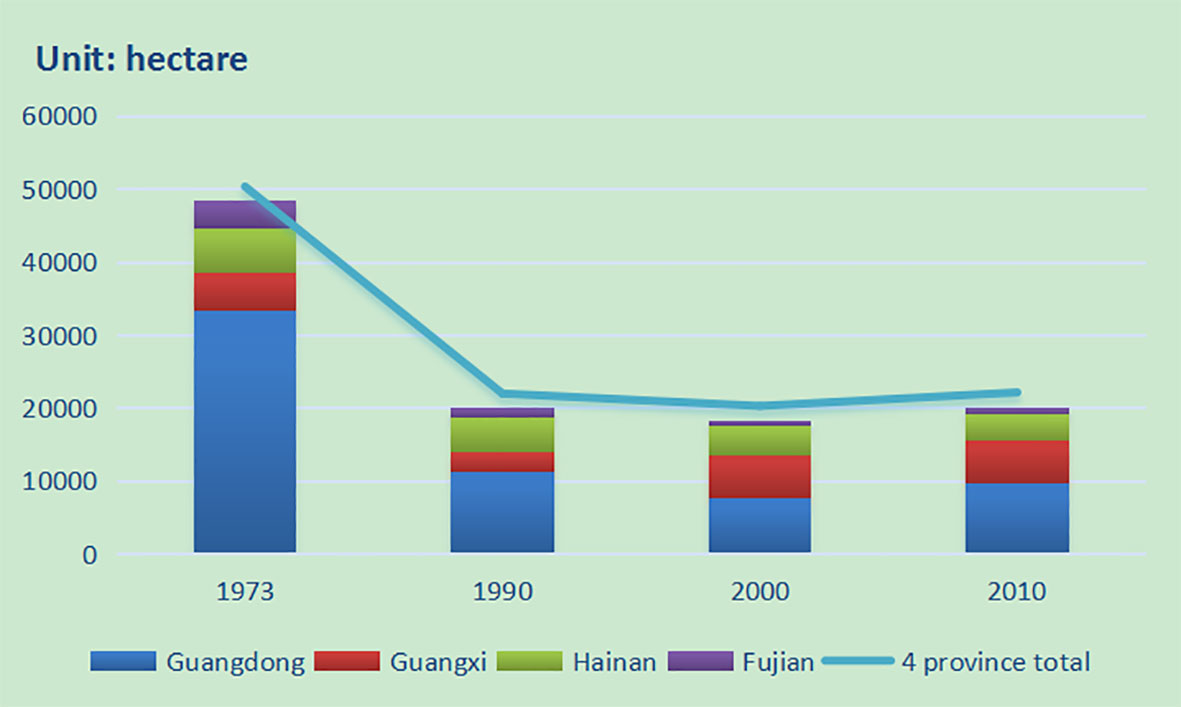
Figure 1 Change of mangrove area in China from 1973 to 2013 (Jia, 2014).
Mariculture ponds (e.g., shrimp ponds) account for 97.6% of the area occupied by mangroves in China (Jia, 2014), severely reducing and damaging the mangrove ecosystems. On the one hand, high concentrations of untreated wastewater from these ponds are mostly directly discharged into remnant mangrove areas nearby, endangering the ecosystem further. On the other hand, fishery resources that rely on mangroves may also eventually be exhausted as mangroves die off, causing an unsustainable and unhealthy system of food production (Hu et al., 2012; Chatvijitkul et al., 2017; Hu et al., 2020).
Mariculture is similarly the main reason for mangrove loss in many Southeast Asian countries. In the Philippines, nearly half of the 279,000 hectares of mangroves that were lost from 1951 to 1988 were developed into mariculture ponds. The scale of mariculture ponds in Malaysia has gradually expanded since 1996, while the area covered by mangroves has decreased sharply or even disappeared. In Vietnam, the construction of shrimp ponds is one of the main reasons for the loss of mangroves; 42.5% and 60.1% of mangroves are estimated to be lost due to mariculture ponds in Nghe An and Thanh Hoa provinces, respectively (Hawkins et al., 2010; Pham et al., 2016; Nguyen et al., 2021).
History of mangrove restoration projects and associated problems
The degradation of mangroves causes many ecological problems, such as reduced ability to resist marine disasters, shrunken carbon sinks, and unsustainable fisheries (Bouillon et al., 2003; Gonneea et al., 2004; Alongi, 2012; Dung et al., 2016; Liang et al., 2018). China and some Southeast Asian countries have thus invested large sums of money in mangrove restoration projects. Although some projects accomplished their anticipated outcomes, most are still facing many problems.
Progress and development of mangrove ecological restoration projects
Ecological restoration of mangrove forests is highly valued in China. From 2010 to 2017, RMB ~13,700,000,000 were allocated by the central government of China from the special funds for marine ecological restoration. As a result, ~2,300 hectares of coastal wetlands have been successfully restored. These statistics do not include funds from local governments (Ministry of Nature Resources of People's Republic of China, 2018). Mangrove rehabilitation efforts account for the largest part of all marine ecological restoration projects in China and became the most focused supporting project in 2019. Particularly, the central government provided RMB 600,000,000 to five coastal provinces to implement mangrove rehabilitation in 2020 under the “Blue Bay” project. Meanwhile, “the special action plan for mangrove protection and restoration (2020–2025)” (hereinafter referred to as SAPMPR) was issued by the central government to continue its support for mangrove restoration. The SAPMPR aims to plant and restore 18,800 hectares of mangroves, including 9,050 hectares of new mangrove plantations and 9,750 hectares of existing mangrove restorations (Ministry of Natural Resources of People’s Republic of China, 2020-4-9). These projects have achieved anticipated results as can be seen in Figure 1; from 2000 to 2019, the mangrove area has increased by 47%.
Similar to China, mangrove ecological restoration projects have been greatly supported by other countries in Southeast Asia. For example, Malaysia allocated 45,300,000 RM (RMB ~70,030,000) to implement a mangrove replanting program, along with other suitable tree specialties, along its national coastlines from 2005 to 2015. Vietnam planted 1,300 hectares of mangroves by 2020. Indonesia restored 37,539 hectares of mangroves by 2008 through its “Kebun Bibit Rakyat” project from 2010 to 2014, where mangroves were restored at a rate of 10,000 hectares per year (Hafsah, 2013).
Main problems faced by mangrove ecological restoration projects
The mangrove ecological restoration projects face two common problems in these countries: funds and spaces (Primavera and Esteban, 2008; Farley et al., 2009).
Insufficient funds and uneven distribution of funds
Although China has invested large funds in mangrove ecological restoration, they are still insufficient due to the huge restoration demand. Mangrove restoration projects are generally expensive, and the project costs vary in different regions. In some regions, the government must compensate pond owners for converting the ponds to mangrove forests. However, some owners may not be satisfied with the amount of compensation as mangrove ecological restoration projects lack practical economic profit. In addition, no profit leads to few participations in social capital. Table 1 lists the five mangrove restoration projects supported by China’s central government in 2020. The average cost was RMB ~999,000/ha. As China’s proposition for the “SAPMPR,” according to our calculations, the capital needed is RMB ~18,600,000,000 for 5 years (RMB 3,100,000,000/year). However, in 2020, the capital used for mangrove ecological restoration was only RMB 600,000,000, and the funding gap was RMB 1,500,000,000 per year. The gap may be financed by local governments, leading to huge pressure on the local governments.
Overall, the funds for mangrove ecological restoration projects are unevenly distributed in space and time. For example, although the mangrove area of Guangdong is 1.12 times more than that of Guangxi, the funds given to Guangdong by the central government accounted for only 16.5% of the funds given to Guangxi in 2020. In addition, during the later stages of mangrove restoration projects, a lack of funds was very common. Most restoration projects received financial support within the first 1~3 years of promised funding only.
In Southeast Asia, there is a great funding gap for mangrove ecological restoration. Unlike in China, financial support from the central government is insufficient. Therefore, restoration projects in some Southeast Asian countries need international assistance. For example, the Global Environment Center (GEC) has funded many successful cases of mangrove ecological restoration in Malaysia. Vietnam received financial support from Japan in 2008, whereby a Japanese nongovernmental organization implemented a mangrove restoration project in the Thai Thui, Tien Lang, and Tinh GIO areas; a total of 1,100 hectares were planted. Vietnam also received 18,350,000 Euros of assistance from Germany and Australia in 2012 for the protection of mangrove wetlands and coastal areas, while the Vietnam government added another 2,600,000 Euros (BPham, T.D., and Yoshino, K., 2016).
Insufficient or unsuitable space
Although mangrove trees are flood-resistant plants, they cannot survive in severely flooded areas or areas without floods. It is thus difficult to find suitable places for mangrove forests (Yang, 2002). The SAPMPR undoubtedly has a huge demand for sea or land areas, which were located on the southeast coast of China and had high population densities with developed economies. In these areas, suitable places for mangrove restoration are very few, thus, artificially transformed coastal zones are the only choice, but they cannot offer high-quality land for mangrove planting. Some mangrove restoration projects even replace other ecosystems, such as seagrass beds. For example, in a project implemented in Guangdong in 2012, seagrass beds were dug up to plant mangroves, which further degraded the coastal ecosystem.
The lack of space for mangrove restoration has also occurred in some countries in Southeast Asia. In the Philippines, although hundreds of millions of dollars have been invested in the restoration of mangroves in the past two decades, the long-term survival rate of mangroves is generally as low as 10%–20%. The main reason is inappropriate planting space, while the ideal space has been transformed into fishponds. Mangroves should be replanted where fishponds have replaced them, not where they never existed, such as seagrass beds and tidal flats (Primavera and Esteban, 2008; Farley et al., 2009).
Emerging industries in coastal zones
Emerging industries in coastal zones have recently developed, which include industrialized mariculture, fishery–solar complement, and marine ecotourism. These new industries may replace traditional industries and reduce sea area use.
Industrialized mariculture
Industrialized mariculture includes running water and circulating water mode. Its major characteristics are three-dimensional (3D) breeding, water quality, and disease control. It can increase output per unit area, stabilize the quality of products, and reduce the sea or land use area. Therefore, it features saved water, all-weather suitability, safe production methods, reduced pollution, and the option to choose different mariculture species (BTiller, 2015).
In China, industrialized mariculture has developed for more than 30 years. To speed up the development of industrialized mariculture, China has issued a policy to encourage the development of industrialized mariculture (Ministry of Agriculture and Rural Affairs of People's Republic of China, 2021).
The breeding of turbot (Paralichthys olivaceus), salmon (Salmonidea), and other species is common in China. The volume of China’s industrialized mariculture was 39,410,000 m3 in 2020 with a 12.1% growth year-on-year; the total output of mariculture products was 325,000 tons, and the output per unit volume was 8.3 kg/m3. However, circulating water technology has been adopted by less than 15% of industrialized mariculture industries due to its high cost, complex process, high energy consumption, and requirements for technical skills and equipment. The biggest disadvantage is high cost, especially during the early stages of setup (Antonio et al., 2000; Blancheton, 2000; Suantika et al., 2001; Saidul et al., 2014; Sha and Zhu, 2021). Nowadays, industrialized mariculture factories in southern China are less than those in northern China because it is more profitable to implement them in the adjustable temperature of colder areas.
Fishery–solar complementary industries
The “fishery–solar complementary” industries aim to build solar power generation machines on the water surface of mariculture ponds. They generate electricity simultaneously with mariculture, which saves coastal space resources. Additionally, it provides clean energy (Wang, 2017; Guo et al., 2017; Lei and He, 2021), improves the environment, and is of great significance for carbon neutralization. The electricity produced in the mangrove forests of Southeast China can be consumed locally by factories, which reduces wasted electricity as compared to the transportation of electricity from western China. In China, policies promoting the development of the fishery–solar complementary industries have been in place, attracting the attention of social capital investors, such as energy companies.
For this emerging industry, the difficulty is not a lack of social capital but the difficulty of obtaining permissions. For example, investors should sign agreements with pond owners, which requires negotiation. Additionally, investors must apply for governmental permission to use the sea area, which is open for mariculture ponds only in some areas. This process may include procedures to obtain permits from other government departments, such as the Forestry Department and the Environmental Protection Department.
Marine ecotourism
Marine ecotourism is a promising industry based on good marine ecology and well-protected marine culture. At present, China’s marine tourism is booming, as the tourism industry is extending from land to sea (Liu, 2012; Chen et al., 2020; Zheng and Zhu, 2020; Su et al., 2021). However, marine ecotourism is threatened or restricted; for example, the natural landscape has been destroyed by a large area of mariculture ponds and consequential pollution (BQiu et al., 2018; BWang, 2020). Tourism facilities are also damaged by natural disasters; marine ornamental animals disappear as biodiversity declines (Xu, 2012; Li and Yu, 2020; Wang, 2020).
Means of addressing the coastal ecological degradation and emerging industries
Coastal ecological restoration and emerging industries have interacted with each other for mutual betterment in different parts of the world, and thus, we must find inspiration from other countries and places.
The problems between ecological restoration and emerging industries
As shown in Figure 2, local governments face dual difficulties from the perspectives of economic development and ecological restoration. Due to the lack of social capital, the tax generated from traditional mariculture cannot provide sufficient funds for ecological restoration. Ecological restoration thus requires input from other taxes, such as transfer payment funds from the central government. However, this model is unsustainable. To continue ecological restoration consistently in the future and develop a sustainable economy for it, mariculture ponds must be upgraded to industrialized mariculture, which will offer numerous advantages, including compact structure, low pollution, and more efficiency. At the same time, the restored ecosystem can be used to develop ecotourism, such as leisure fishing. However, ecological restoration consumes a lot of space, resources, and taxes, making it difficult to attract social capital; meanwhile, emerging industries need these same resources (e.g., space) or start-up funds. If these emerging industries cannot be developed, the local ecological restoration will lose sustainable funds. Therefore, the core of the problem is that the transfer payment funds have not improved the efficiency of local space utilization, leaving the local economic output per unit area unimproved.
Inspiration from other countries and places
Ecological banks
An ecological bank is a platform that establishes cooperation between scattered farmers and social capital (Xu et al., 2021a; Department of Nature Resources of Fujian Province, 2020-5-8, 2020-5-8). In Fujian province, China, the ecological bank converts scattered resources into capital and exports ecological products. Furthermore, it offers a common platform that emphasizes market operation so that local governments, financial institutions, professional operators, and farmers can divide their work and cooperate (Yang and Guo, 2017; Huang et al., 2020; Gao et al., 2020; Zhang et al., 2020).
Experiences from other comprehensive projects in China
In China, the Zhanjiang city government found a balance between the mutual benefit of mangrove protection and enclosure mariculture practices. In 2021, they launched a pilot project that applied a comprehensive coupling-coexistence model to mangrove ecological restoration and mariculture ponds that not only protected and restored mangroves but also retained their economic benefits (Yang and Guo, 2017; Xinhuanet 2022).
Experiences from Southeast Asian countries
In Vietnam, the local government established shrimp mariculture and mangrove mixed forestry enterprises (SFMFEs) to reduce mangrove losses caused by shrimp ponds. The SFMFEs require workers to breed shrimp and plant mangroves (e.g., Rhizophora apiculata) at the same time (Hawkins et al., 2010).
In the Philippines, Professor Danao proposed the concept of “ecological symbiosis,” which ensures the protection of mangroves within the overall design of mariculture (Danao, 2019). Ecological symbiosis offers water of better quality through biofiltration, and the existing fishponds are changed to eco-aquaculture zones. Production efficiency is improved by better management and use of technology while developing ecotourism and increasing the income of the community (Figure 3).
A proposed integrated management plan
Based on the analysis and inspiration, we propose a plan for “integrated management of emerging marine industries and ecological restoration with the participation of social capital” to improve both factors (Figure 4). The plan is as follows. Firstly, the local government will establish an “ecological bank,” whose equity will come from capitalized ecological resources of scattered pond owners, financial funds of different government departments (including ecological restoration funds, environment protection funds, fishery subsidies, and emerging industry subsidies), and social capital. The task of the ecological bank is to reduce government expenditure, attract more social investment, and obtain policy and technical support. Secondly, different government departments will formulate a common development plan, whereby funds from them are concentrated to support emerging industries. Some profits from the emerging industries will be used to support new ecological restoration projects, while some will be returned to pond owners and social investors to complete the capital circulation. The restored ecological environment will eventually benefit both the emerging industries and pond owners. Specifically, coastal area “A” in Figure 5 was covered by mangroves, which were cut down to create mariculture ponds. Although these ponds contribute to taxes, they bring pollution and a decline in the ability to resist natural disasters, making the local economy unsustainable.
To implement the proposed plan, the capital value of every pond owner’s ecological resource and production equipment will be evaluated; government funds from ecological restoration, fishery, and tourism development departments will be injected into this bank. After that, professional mangrove ecological restoration projects and industrialized mariculture projects can be implemented while attracting social investment. The income of the pond owners will be stable, as they can work in the emerging industry being set up. For those pond owners who are unwilling to work in factories, work can be offered in ecological mariculture ponds that are less polluted, have higher biodiversity, and are a promising ecotourism resource (Feng et al., 2017). For example, old shrimp ponds can be transformed into typical “Kiwai ponds” in which adult shrimps are allowed to reproduce in summer, while the ponds are dry in autumn. The floodgates of Kiwai ponds will be opened during high tide to invite juvenile shrimps from the ocean naturally. A bird island can be set up in the middle of the Kiwai ponds, allowing the migratory birds to eat and breed in the area (Jacob et al., 2018). The Kiwai ponds can produce higher-quality shrimp. Industrialized mariculture can thus save a lot of coastal space while allowing fishery–solar complement to be implemented simultaneously, whereby solar panels are installed on and around the factories. At the same time, part of the space saved and profits earned by emerging industries can be used for mangrove ecological restoration. When the mangrove forests take root, they will bring benefits to the locals, such as habitat restoration of fishery seedlings, marine disaster reduction, and carbon sequestration. All of these profits can in turn save local government financial expenditure and increase the income of mariculture farmers and emerging industry investors.
SWOT (Strength, Weak, Opportunity, Threat) analysis of the proposed management approach
In 1982, Dr. Heinz Weihrich proposed the SWOT matrix analysis method. We performed the SWOT analysis to study the feasibility of the proposed plan for integrated management. The analysis covers the situation, internal conditions, and external competition. It lists and arranges internal strengths (S), weaknesses (W), external opportunities (O), and threats (T) of a proposed object in the form of a matrix—QCDMS (quality, cost, delivery, safety, and morale)—then it is listed for an internal analysis, and then PEST (political, economic, social, and technological) is listed for an external analysis. All of the factors are listed in internal strategic factor analysis (IFAS) and external strategic factor analysis (EFAS) tables. The factors with direct, important, massive, urgent, and long-term influence on the implementation of the plan are listed first, while those with indirect, secondary, minor, unimportant, and short-term influence are listed later. The possible score ranges from 5 to 1, and the sum of all IFAS and EFAS weights is 1 each. All factors are sorted according to the expert scoring method. By combining internal factors with the external environment for matrix analysis, four main strategies (SO, WO, ST, and WT) were obtained to cope with environmental changes (Sayyed et al., 2013; Rong and Rui, 2015; Rezazadeh et al., 2017; Roslan et al., 2018; Sartor et al., 2019).
Internal strategic factor analysis
Strength analysis (S)
1) The ecological and economic quality in coastal areas was improved. Firstly, information related to funds for mangrove restoration is needed by many stakeholders, especially the government. The proposed plan can collect different information to meet the needs of more stakeholders. Secondly, the use of antibiotics can be greatly reduced as the circulating water method is used. Meanwhile, large-scale mariculture factories can integrate with new technology, such as Internet of Things (IoT), making products traceable and their quality more transparent. At last, industrialized mariculture factories can reduce the discharge of polluted water. Overall, traditional Kiwai ponds and restored mangrove wetlands can improve water quality and biological diversity.
2) The cost of government and enterprises is reduced. Part of the funds for early ecological restoration will be used to subsidize emerging industries and reduce their overall costs. Emerging industries can then attract more social capital, which can partly be used for ecological restoration, reducing fiscal expenditure by the government.
3) The efficiency of space utilization is improved. The plan can transform the single mariculture pond space into various spaces, such as spaces for 3D industrialized aquaculture, ecological restoration, ecotourism, and new mangrove plantations, which would improve the efficiency of space utilization. These setups will be supported by government policy.
4) The efficiency of talents and equipment is improved. Talents and human resources will be gathered from all disciplines to implement the plan and integrate a variety of equipment, such as construction machinery, to improve the efficiency of the personnel.
5) More sustainable ecological services are provided. With the participation of social capital, follow-up funds for ecological restoration are guaranteed. Three-dimensional mariculture factories can provide a stable output of products and reduce the pressure on local coastal development, while the mangroves can provide more sustainable ecological services.
Weakness analysis (W)
1) The reliability of the plan must be tested. Compared to single projects developed independently, the proposed plan has no predecessor at present and may face unexpected policy problems. An important risk to avoid is factory mariculture companies defrauding government subsidies in the name of ecological restoration.
2) The cost is higher in the early stage. The initial investment includes demolition compensation for pond owners, construction of mariculture factories, and investment in ecological restoration, which may require more start-up funds. This means that a greater proportion of funds must be invested by the government during the early stage.
3) Technical defects. Circulating water machines need a continuous energy supply; in case of a power failure, a large number of fish and shrimp may die. The efficiency of solar power generation is not very high, and it faces the challenges of moisture, salt fog, and natural disasters near the sea.
4) The operational process of equipment is more complex. The operation of industrialized mariculture and other equipment is complex; therefore, workers must be professionally trained. Conventional mariculture farmers may not be suitable for the jobs pertaining to the proposed project.
5) Standardization of the emerging industries and ecological restoration need to be strengthened. The standardization of the operation of industrial mariculture facilities and equipment, fishery–solar complementary, ecotourism, fund subsidy, and the ratio of ecological restoration funds/profits of emerging industries need to be established and strengthened.
External strategic factor analysis
Opportunity analysis (O)
1) Governmental policies are supportive of emerging industries and ecological restoration. Local governments face pressure from mangrove planting tasks, such as insufficient space for suitable mangrove plantations and compensation funds for pond withdrawal. Historically, under the pressure of ecological restoration needs, some local governments have had to choose areas without natural mangroves, resulting in new ecological problems. To solve these problems, the national and local governments must be supportive of a replacement plan for ecological restoration.
2) Local economic growth needs the development of emerging industries, while ecological restoration needs sustained financial support as well. The local government faces the pressure of economic development. However, traditional mariculture has been sluggish, and the development of emerging industries is needed. Mangrove ecological restoration implemented until now has suffered from insufficient follow-up funds. Single projects especially generally face financial problems. Due to the lack of profit, mangrove ecological restoration projects implemented lack management as well.
3) Society needs greater quality ecological services and mariculture products. Many mangroves are surrounded by shrimp ponds, even in mangrove reserves. Before such reserves were established, shrimp ponds already existed, and the quality of shrimp was not good due to excessive antibiotic application. In contrast, the social demand for ecological services and mariculture products is now growing.
4) Factory mariculture and solar energy are recognized as major development directions for modern industry. Industrial mariculture, solar power generation, and other coastal emerging industries are recognized as the main development direction for modern industries because of their many technical advantages.
Threat analysis (T)
1) The plan may risk policies on sea area use. Some mariculture ponds suffer from historical issues of reclamation, where the pond owners did not obtain registration certificates for sea area use. Once the construction of mariculture factories and the development of ecotourism start, the right to use these areas must be confirmed. However, under the current sea area use policy, it is difficult to obtain administrative permissions due to strict controls.
2) It is difficult to coordinate across different government departments. At present, projects on mangrove ecological restoration, industrialized mariculture, and ecotourism are managed by different government departments, such as the natural resources, agriculture, tourism, and energy departments. Governmental financial funds are applied for and distributed by these departments, while some originate from the central and local governments, making them difficult to be coordinated.
3) Stakeholders need to be coordinated. Mariculture farmers and community residents need to be involved in coordinated efforts. The proposed plan may result in changing the lifestyle of local mariculture farmers, which may not be accepted by all.
4) The spread of technology in emerging industries is not wide enough. Emerging industries need a large number of workers with suitable professional skills; however, most local mariculture farmers do not master these skills. Meanwhile, technical problems in emerging industries must be solved, but there is a lack of training in this regard.
Finally, we sorted the analyzed contents according to priority and degree of influence. Three experts scored and weighted every factor, and the final score was calculated (Figure 6). From the IFAS, we can see that the plan’s score was 3.85, which is higher than the average. Therefore, the plan can offer advantages and possibly avoid its disadvantages. From the EFAS, a higher-than-average score of 4.27 was calculated, showing that the plan can readily avoid external threats and seize opportunities. By combining the internal factors with the external environment for matrix analysis, four main strategies were obtained to cope with environmental changes (Figure 7). The scores of S, W, O, T are 2.41, 1.44, 2.74, 1.53, respectively, so quadrant 1 scored highest, and the SO strategy will be the best choice.
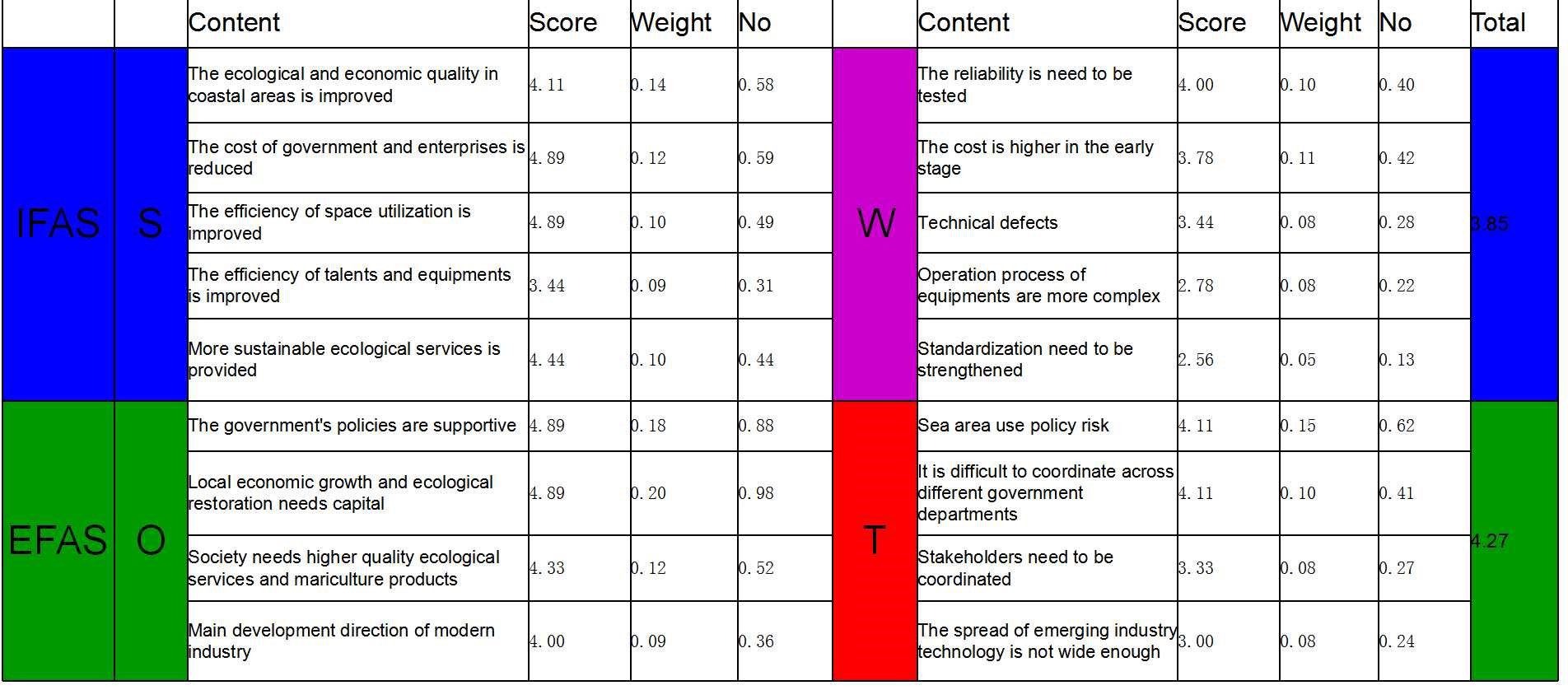
Figure 6 A SWOT (Strengths, Weaknesses, Opportunities, and Threats) analysis of the integrated management of ecological restoration and emerging industries.
Conclusions and recommendations
We performed an analysis of the current situation and existing problems pertaining to ecological restoration and emerging industries in coastal zones; lessons were gathered from the experiences of regions in China and Southeast Asian countries. We propose a plan to integrate mangrove restoration projects and the activities of emerging industries. A SWOT analysis was performed to understand the strengths, weaknesses, opportunities, and threats of the plan to obtain the SO, ST, WO, and WT strategies. Our results showed that the proposed plan can meet the needs of local governments, such as pollution control, industrial upgrades, and improvement in residents’ income. The plan will also ensure follow-up funds for mangrove ecological restoration while providing land for emerging industries. After the successful implementation of the plan, the quality of mariculture products is expected to be improved, and additional employment opportunities are guaranteed for the locals. The plan is highly consistent with national government policies, making it a win-win model. For the optimal implementation of the plan, the advice extracted from the SWOT analysis should be considered. With these strategies, it is hoped that problems, such as insufficient funds and space and the need for emerging industrial development, will begin to be addressed.
Author contributions
XS and CM write the paper together, the work was supported by CM’s grants. XJ have drawled figures, and analyze data. All authors contributed to the article and approved the submitted version.
Funding
This work was supported by the Innovation Group Project of Southern Marine Science and Engineering Guangdong Laboratory (Zhuhai) (No.311021004) and Southern Marine Science and Engineering Guangdong Laboratory (Zhuhai) (SML2021SP308), which are led by CM.
Acknowledgments
We thank to the Innovation Group Project of Southern Marine Science and Engineering Guangdong Laboratory (Zhuhai) (No.311021004)and Southern Marine Science and Engineering Guangdong Laboratory (Zhuhai) (SML2021SP308) for fund supporting and research findings sharing.
Conflict of interest
The authors declare that the research was conducted in the absence of any commercial or financial relationships that could be construed as a potential conflict of interest.
Publisher’s note
All claims expressed in this article are solely those of the authors and do not necessarily represent those of their affiliated organizations, or those of the publisher, the editors and the reviewers. Any product that may be evaluated in this article, or claim that may be made by its manufacturer, is not guaranteed or endorsed by the publisher.
Supplementary material
The Supplementary Material for this article can be found online at: https://www.frontiersin.org/articles/10.3389/fmars.2022.1015262/full#supplementary-material
References
Alongi D. M. (2012). Carbon sequestration in mangrove forests. Carbon Manage. 3 (3), 313–322. doi: 10.4155/cmt.12.20
Antonio T., Carlos M., Manuel P. (2000). Environmental impacts of intensive aquaculture in marine waters. Water Res. 34 (1), 334–342. doi: 10.1016/S0043-1354(99)00102-5
Blancheton J. P. (2000). Developments in recirculation systems for Mediterranean fish species. Aquacult Eng. 22 (1-2), 17–31. doi: 10.1016/S0144-8609(00)00030-3
Bouillon S., Dahdouh-Guebas F., Rao A. (2003). Sources of organic carbon in mangrove sediments: variability and possible ecological implications. Hydrobiologia 495 (1), 33–39. doi: 10.1023/A:1025411506526
Bureau of Nature Resources of Jiangmen City Main data bulletin of the third national land survey of guangdong province. Available at: http://www.jiangmen.gov.cn/jmzrj/gkmlpt/content/2/2507/post_2507058.html#187.
Bureau of Statistics of Guangxi Zhuang Autonomous Region Main data bulletin of the third national land survey of guangxi. Available at: http://tjj.gxzf.gov.cn/zxfb/t10390768.shtml.
Chatvijitkul S., Boyd C. E., Davis D. A. (2017). Pollution potential indicators for feed-based fish and shrimp culture. Aquaculture 477, 43–49. doi: 10.1016/j.aquaculture.2017.04.034
Chen N., Liu J., Ba Z. X., Zhong J. F., Liu X. L. (2020). The construction and research of marine tourism management system based on the perspective of industrial integration. J. Coast. Res. 112, 132–135. doi: 10.2112/JCR-SI112-038.1
Danao M. P. (2019). “Ecological symbiosis-integrated design method of brakan mangrove protection and mariculture,” in Proceedings of 2019 Hengshui Lake Ecological Civilization International Exchange Conference. 90–95.
Department of Nature Resources of Fujian Province Main data bulletin of the third national land survey of fujian province. Available at: http://zrzyt.fujian.gov.cn/zwgk/zfxxgkzl/zfxxgkml/tdgl_19753/202112/t20211231_5805488.htm.
Department of Nature Resources of Fujian Province (2020) Good news-nanping "forest ecological bank" was selected as the first batch in China typical cases of value realization of ecological products. Available at: http://sthjt.fujian.gov.cn/zwgk/ywxx/stbh/202005/t20200508_5261709.htm.
Dung L. V., Tue N. T., Hieu P. V., Quy T. D., Omori K. (2016). Tracing organic carbon dynamics in mangrove ecosystems using stable isotope analysis. Proc. Int. Symposium Hanoi Geoengineering 95, 53–58. doi: 10.1016/j.aquabot.2007.12.005
Farley J., Batker D., de la Torre I., Hudspeth T. (2009). Conserving mangrove ecosystems in the Philippines: transcending disciplinary and institutional borders. Environ. Manage 45 (1), 39–51.
Feng J. X., Zhu X. S., Ning C. X., Lin Q. X., Lin G. H. (2017). Evaluation of mangrove-aquaculture integrated system in wetland eco-restoration in shenzhen. China Environ. science. 37 (7), 2662–2673.
Gao Q., Gou L. (2014). Research on the marine ecological restoration in the industry substitution theory. Sci. Manage., 34 (06), 61–65.
Gao X. L., Lin Y. Q., Xu W. H., OUYANG Z. Y. (2020). Research progress on the value realization of ecological products. Acta Ecologica Sin. 40 (1). doi: 10.5846/stxb201807211563.
Gonneea M. E., Paytan A., Herrera-Silveira J. A. (2004). Tracing organic matter sources and carbon burial in mangrove sediments over the past 160 years. Estuar. Coast. Shelf Sci. 61 (2), 211–227. doi: 10.1016/j.ecss.2004.04.015
Guo L. C., Hu X. D., Su Y. Y., Wu P. P., Weng S. G. (2017). Design and flood control assessment of 5MWp fishing and photovoltaic power project in xinghua city. IOP Conf. Series: Earth Environ. Sci. 100 (1), 1–5. doi: 10.1088/1755-1315/100/1/012034
Hafsah E. (2013). Implementasi program kebun bibit rakyat (KBR). Jurnal Demokrasi Dan Otonomi Daerah 3, 33–36.
Hawkins S., To P. X., Phuong P. X., Thuy P. T., McNally R. (2010). Roots in the water: Legal frameworks for mangrove PES in vietnam. katoomba group's legal initiative country study series. For. Trends 20, 19–43.
Huang Y., Wen T. J., Fan S. S., Luo C. L. (2020). Economics of scale, multi-incentives and realization of ecological product value: Summary of experience of forest eco-bank in nanping, fujian. Issues Forestry Economics 40 (5), 499–509. doi: 10.16832/j.cnki.1005-9709.20190361
Hu Z., Lee J. W., Chandran K., Kim S., Khanall S. K. (2012). Nitrous oxide (N2O) emission from aquaculture: A review. Environ. Sci. Technol. 46 (12), 6470. doi: 10.1021/es300110x
Hu B. B., Xu X. F., Zhang J. F., Wang T. L., Meng W. Q., Wang D. Q. (2020). Diurnal variations of greenhouse gases emissions from reclamation mariculture ponds. Estuarine Coast. Shelf Sci. 237, 37–40. doi: 10.1016/j.ecss.2020.106677
Jacob C., Buffard A., Pioch S., Thorin S. (2018). Marine ecosystem restoration and biodiversity offset. ecological engineering. J. Ecotechnol, 120, 585–594. doi: 10.1016/j.ecoleng.2017.09.007
Jia M. M. (2014). Remote sensing analysis of mangrove dynamic changes in China from 1973 to 2013 (Hefei City, Anhui province, China:University of Chinese Academy of Sciences).
Lei Z., He Y. C. (2021). Kong B solar radiation influence on power generation benefit of large-scale fishery solar complementary photovoltaic power station. J. Nanjing Univ. Inf. Sci. & Technol(Natural Sci. Edition) 13 (3), 377–382. doi: 10.13878/j.cnki.jnuist.2021.03.016
Liang Y. X., Cheng X. W., Zhu H., Shutes B., Yan B. X., Zhou Q. W., et al. (2018). Historical evolution of mariculture in China during past 40 years and its impacts on eco-environment. Chin. Geographical Sci. 28 (3), 363–373. doi: 10.1007/s11769-018-0940-z
Li N., Chen P. M., Qiao P. P., Qin C. X. (2013). Research advances on marine ecological effect and repair techniques of coastal mangrove wetland. Guangdong Agric. Sci. 40 (20), 157–160, 167. doi: 10.3969/j.issn.1004-874X.2013.20.047
Liu H. (2012). Problems and countermeasures faced by china's marine ecotourism industry. Acad. Theory 13), 93–94.
Li D. M., Yu X. Y. (2020). Analysis and optimization of influencing factors of zhuhai marine tourism economic development. J. Coast. Res., 106 (SI), 101–104. doi: 10.2112/SI106-026.1
Ministry of Agriculture and Rural Affairs of People's Republic of China (2021) Opinions of the ministry of agriculture and rural affairs on accelerating the development of aquaculture mechanization. Available at: http://www.moa.gov.cn/nybgb/2020/202012/202102/t20210201_6360857.htm.
Ministry of Nature Resources of People's Republic of China (2018) China Continues to strengthen marine ecological restoration. Available at: http://www.gov.cn/xinwen/2018-07/27/content_5309754.htm.
Ministry of Nature Resources of People's Republic of China (2020) The ministry of natural resources introduced and answered questions about the special action plan for mangrove protection and restoration, (2020-2025). Available at: http://www.gov.cn/xinwen/2020-08/31/content_5538800.htm.
Nguyen H. T. T., Hardy G. E. S., Van Le T., Nguyen H. Q., Huy Nguyen H., et al. (2021). Mangrove forest landcover changes in coastal Vietnam: A case study from 1973 to 2020 in thanh hoa and nghe an provinces. Forests 12 (5), 637.
Pham T. D., Yoshino K. (2016). Impacts of mangrove management systems on mangrove changes in the Northern Coast of Vietnam. Tropics. 24, 141–151.
Primavera J. H., Esteban J. M. (2008). A review of mangrove rehabilitation in the Philippines: Successes, failures and future prospects. Wetlands Ecol. Manage. 16, 345–358.
Qiu P., Zhang P., Rutana Y. A., Zhou X. (2018). The integration of marine cultural industry and Tourism (Ocean Development and Management), 35 (04), 16–20. doi: 10.20016/j.cnki.hykfygl.2018.04.003
Rezazadeh S., Jahani A., Makhdoum M., Meigooni H. G. (2017). Evaluation of the strategic factors of the management of protected areas using SWOT analysis-case study: Bashgol protected area-qazvin province. Open J. Ecol. 07 (1), 55–68. doi: 10.4236/oje.2017.71005
Rong Y., Rui S. (2015). Ecology compensatory mechanism research of extractive industries in bayannur based on SWOT analysis. Environ. Dev. 2015 (5), 14–18. doi: 10.16647/j.cnki.cn15-1369/x.2015.05.004
Saidul I. Md. (2014). Confronting the blue revolution: Industrial aquaculture and sustainability in the global south (Toronto: University of Toronto Press), 19–148.
Sartor P., Carbonara P., Cerasi S. (2019). A selective and low impacting traditional fishery, sustaining the economy of small coastal villages in central Mediterranean: Keep or replace the small-scale driftnets. Fisheries Manage. Ecol. 26 (6), 661–673. doi: 10.1111/fme.12397
Sayyed M., Mansoori M. S., Jaybhaye R. G. (2013). SWOT analysis of tandooreh national park (NE Iran) for sustainable ecotourism. Proc. Int. Acad. Ecol. Environ. Sci. 3 (4), 296–305.
Sha M. C., Zhu R. J. (2021). “Consideration on temperature control technology of circulating water system in industrialized aquaculture,” in 2021 International Conference on Intelligent Manufacturing Technology and Information Technology. (China) Vol. 11. 90–92.
Suantika G., Dhert P., Rombaut G., Vandenberghe J., De Wolf T., Sorgeloos P. (2001). The use of ozone in a high-density recirculation system for rotifers. Aquaculture 35–49. doi: 10.1016/S0044-8486(01)00532-4
Su Y. J., Xu J. J., Marios S., Shen S. W. (2021). Authenticity, perceived value and loyalty in marine tourism destinations: The case of zhoushan, zhejiang province, China. Sustainability 13 (7), 21–25. doi: 10.3390/su13073716
Tiller R. G. (2015). Confronting the blue revolution: Industrial aquaculture and sustainability in the global south. Global Environ. politics 15 (3), 186–187. doi: 10.1162/GLEP_r_00319
Wang W. (2017). Initial analysis on the environmental superiority of "Fisheries solar energy complementary" photovoltaic power plant in northern jiangsu province. pollut. Control Technol. 28, 30–33.
Wang Z. (2020). Development and integration model of marine tourism resources based on sustainable development. J. Coast. Res. 103, 1030–1033. doi: 10.2112/SI103-214.1
Xinhuanet (2022) Focus on high-quality development | mangrove "turning green into gold" to explore a new way of high-quality development. Available at: https://baijiahao.baidu.com/s?id=1734219295794292261&wfr=spider&for=pc.
Xinhua News Agency (2018) Notice on strengthening the protection of coastal wetlands and strictly controlling reclamation. Available at: http://www.gov.cn/xinwen/2018-07/25/content_5309087.htm.
Xinhua News Agency (2021). The main data results of the third national land survey were released. Available at: http://www.gov.cn/xinwen/2021-08/26/content_5633497.htm
Xu F. Y. (2012). Study on development of Sea eco-tourism based on stakeholders ‘Analysis. Resource Dev. Market 28 (07), 657–659+656.
Xu S. S., Zhao D. L., Xie J. Q., Zhang B. X. (2021a). Enlightenment of "Ecological bank" on marine ecological restoration and value realization: Conception of establishing "Mangrove ecological bank". Ocean Dev. Manage. 38 (12), 67–73. doi: 10.3969/j.issn.1005-9857.2021.12.010
Xu S. S., Zheng Z. Y., Lu Y., Zhang B. X. (2021b). Exploring and solving the difficult problem of marine ecological restoration from the relationship of policy, funds and technology. Ocean Dev. Management. 38 (6), 65–69. doi: 10.3969/j.issn.1005-9857.2021.06.011
Yang C. J. (2002). Discussion on the division of suitable forest land for mangrove forest. Cent. South For. inventory planting 21 (2), 2.
Yang Z., Guo J. (2017). A study on the realization path of marine ecological security governance modernization in China. J. Ocean Univ. China (Social Sciences) 37, 19–23. doi: 10.16497/j.cnki.1672-335x.2017.06.004
Yu L. Y., Lin S. H., Jiao X. Y., Shen X. X., Li R. (2019). Ecological problems and protection countermeasures of mangrove wetland in guangdong-Hong Kong-Macao greater bay area. Acta Scientiarum Naturalium Universitatis Pekinensis 55 (4), 782–790. doi: 10.13209/j.0479-8023.2019.051
Zhang Q., Zhou X., Guo B., Bao Y., Wang Q. (2020). Synergetic realization path of water ecological civilization construction and human-land system optimization under the "Three elements" structure. J. Coast. Res., 104 (SI): 854–857. doi: 10.2112/JCR-SI104-146.1
Keywords: mangrove ecological restoration, space resource utilization efficiency, emerging coastal industries, industrialized mariculture, ecotourism, integrated management, participation of social capital
Citation: Shusheng X, Jingqian X and Mianrun C (2023) Integrated management improves emerging coastal industries and ecological restoration with the participation of social capital. Front. Mar. Sci. 9:1015262. doi: 10.3389/fmars.2022.1015262
Received: 09 August 2022; Accepted: 04 November 2022;
Published: 04 January 2023.
Edited by:
Richard MacKenzie, Institute of Pacific Islands Forestry (USDA), United StatesReviewed by:
Irwan Effendi, Riau University, IndonesiaHarsuko Riniwati, University of Brawijaya, Indonesia
Copyright © 2023 Shusheng, Jingqian and Mianrun. This is an open-access article distributed under the terms of the Creative Commons Attribution License (CC BY). The use, distribution or reproduction in other forums is permitted, provided the original author(s) and the copyright owner(s) are credited and that the original publication in this journal is cited, in accordance with accepted academic practice. No use, distribution or reproduction is permitted which does not comply with these terms.
*Correspondence: Chen Mianrun, Y21yYW5keUBmb3htYWlsLmNvbQ==
 Xu Shusheng
Xu Shusheng Xie Jingqian2
Xie Jingqian2 Chen Mianrun
Chen Mianrun